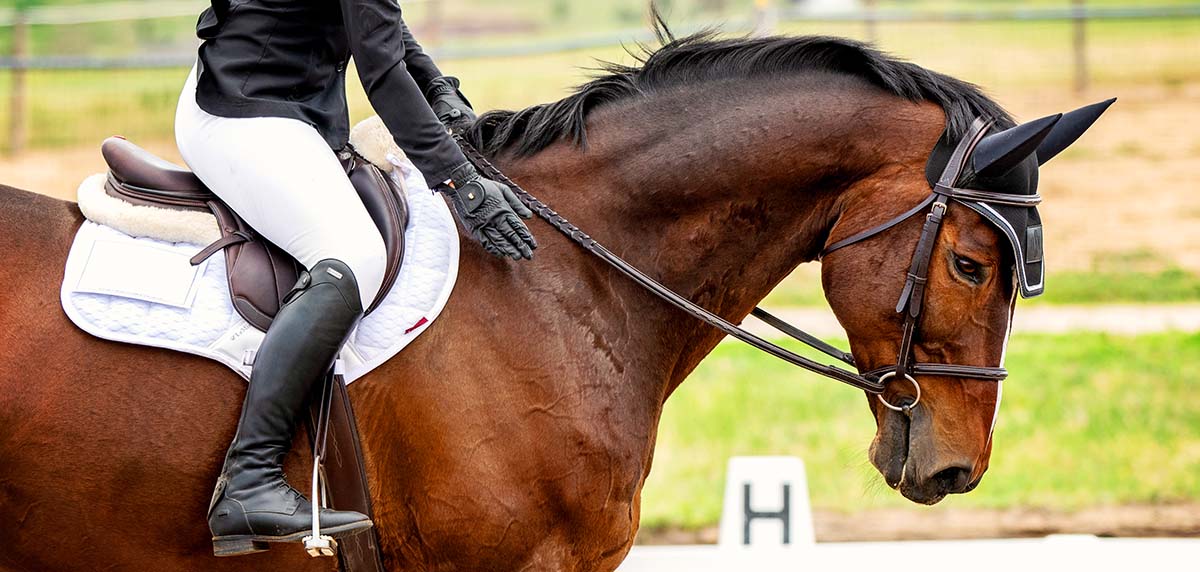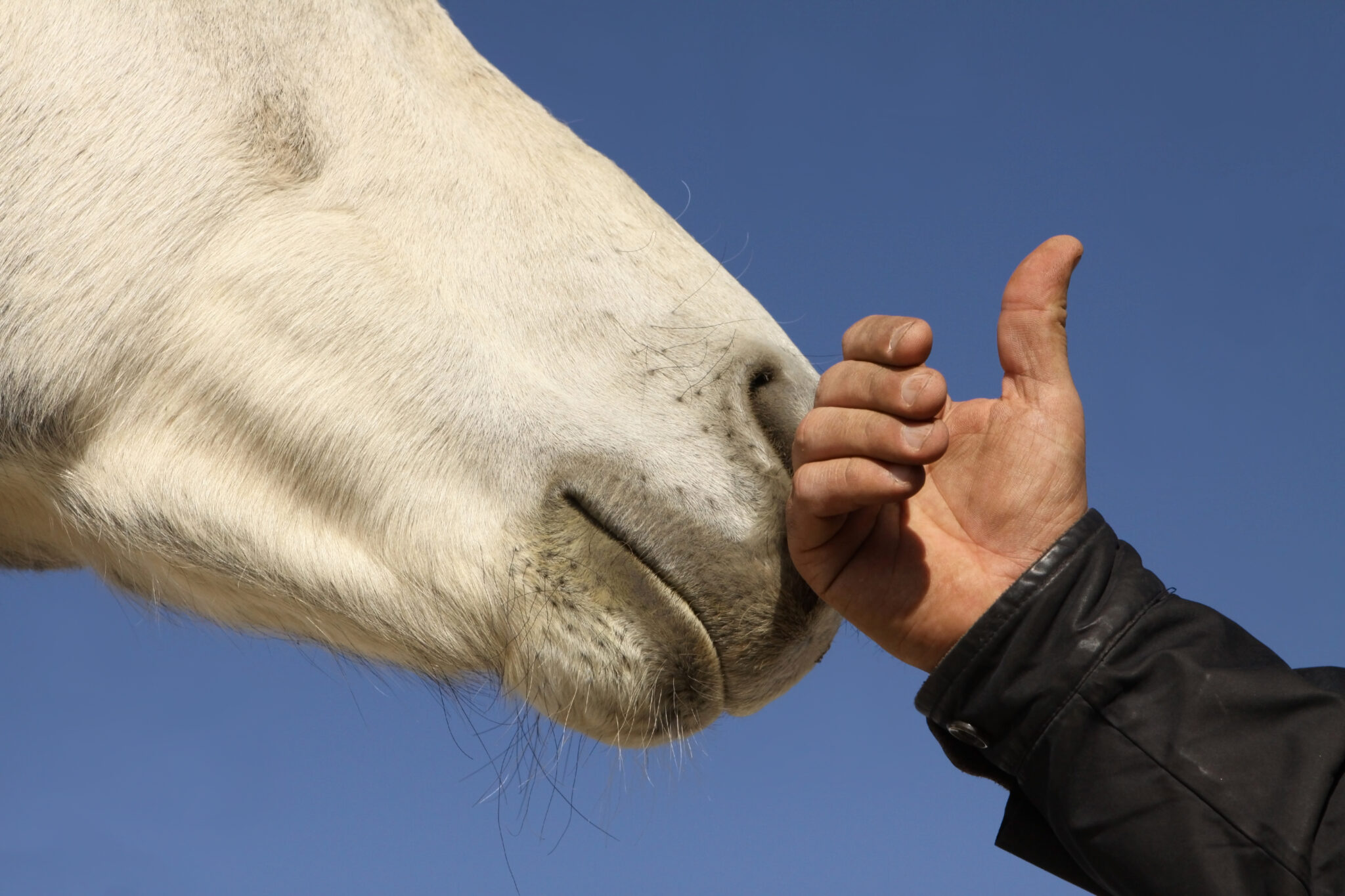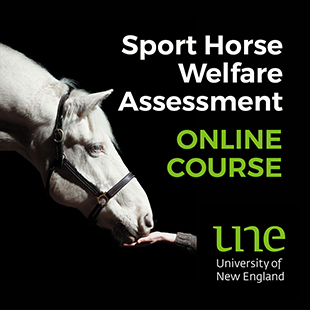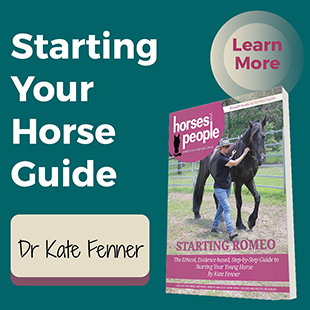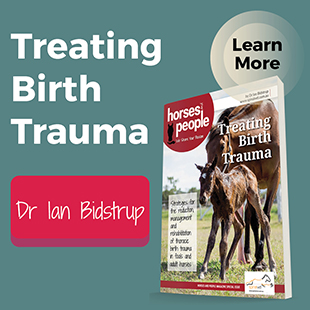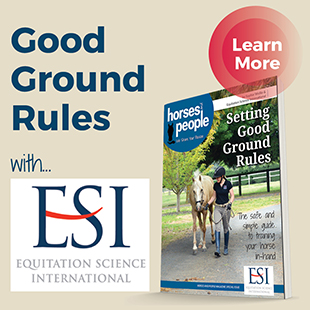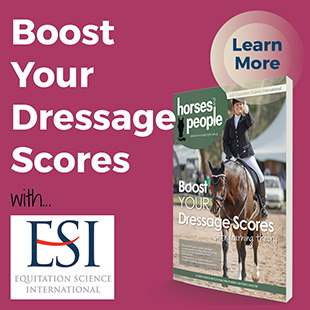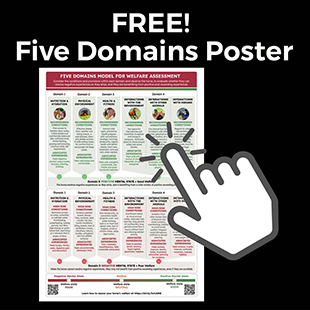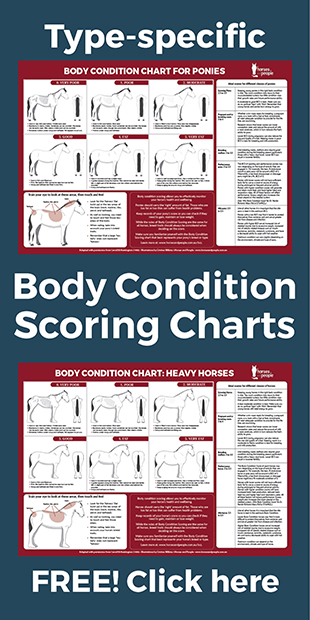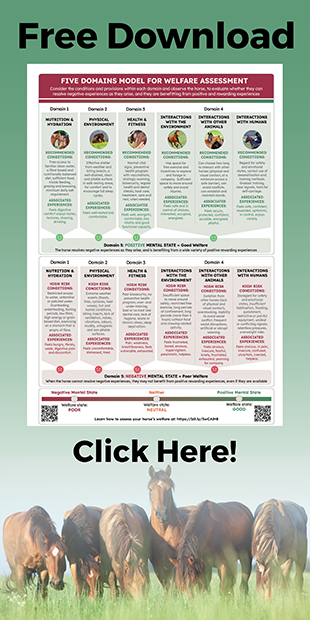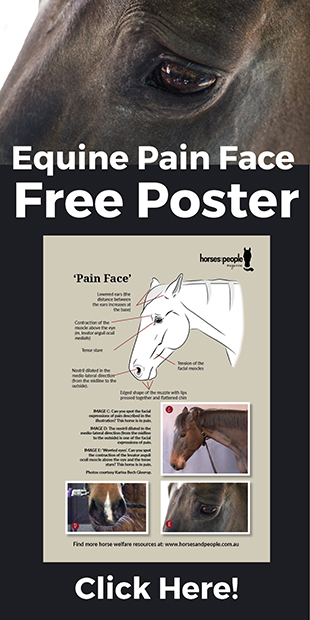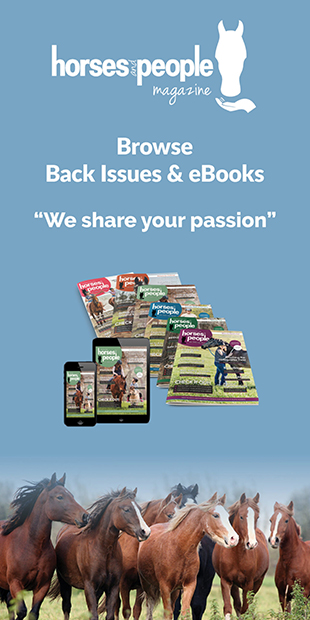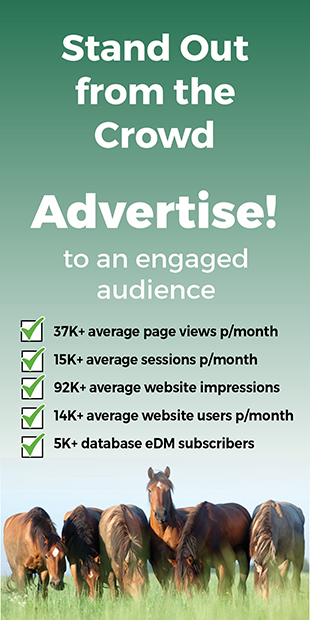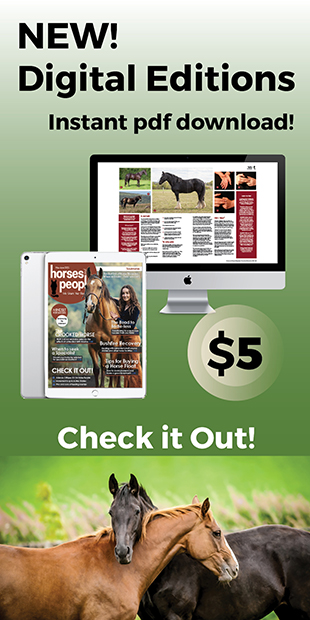What is your vision of tomorrow’s horse world?
When I was growing up, the TV program ‘Tomorrow’s World’ was a huge family deal. Presented by the national icon and MENSA member, Carol Vorderman, it was a glimpse into how our world might look in 30, 40, or even 100 years’ time.
A weekly special event, my family and I would gather with our dinners on laps (ham salad followed by jelly and tinned fruit with evaporated milk poured on top – always!) We would sit, excited, in front of the TV, ready to be wowed by….
‘THE FUTURE!’
The science, the inventions, the tech, the drama… “The lights came on when she clapped, Dad!” my brother would squeal. “Oooh…” the studio audience would exhale. “Well, you just can’t fathom it,” my Dad might add in his broad Yorkshire accent, shaking his head in disbelief.
Thirty years on and so much of what they predicted has come true! Although instead of clapping to turn on the lights I shout at Alexa (when will she learn that I meant the big light, not the hall light?)…
I am writing this in the aftermath of the Tokyo Olympics. What did you think of Tokyo?
I am a rider, horse sport lover, equitation scientist and eternal optimist. I watched with you all, heart in mouth, through the highs and lows of the Olympics. I celebrated with joy seeing barefoot show jumping horses win medals, felt compassion when other horses were withdrawn early to “save them for another day” and felt jolted to my core watching the equestrian section of the Modern Pentathlon.
I followed the explosion of media coverage and joined some of the hard conversations about the future of our sport. And even though we have been shocked, saddened and, at times, deeply angry, can I say, I’m actually excited?
These hard conversations are our collective ‘doing the work’, it is the honest discourse that tips the scales, that gives us an opportunity to think about what we want our sport – and our love of horses – to look like in the next decades.
Tonight, I want to go ‘back to the future’ and sit, open mouthed, jelly wobbling on spoon, and watch what I hope tomorrow will bring for equestrianism.
I want us – you and I – to smile and shake our heads in happy disbelief at what is coming. Because change is real, it’s happening, so in visualising what the future could look like, I hope to inspire others to help shape the changes to ensure future generations can also enjoy a life full of horses.
Can I tell you what I see?
The theme tune of the Horse of the Year Show starts playing (it never gets old). The black screen fades into drone footage of an equestrian property and slowly locks on to a 30-something year old woman riding a grey horse. The pair stops and Pippa smiles at the camera and scratches the horse affectionately.
“My name’s Pippa, and I’ve been riding and competing for around 20 years now. This is Tidy (I don’t know why we called her that because it doesn’t suit her at all!)” she laughs as she combs the hay out of the horse’s mane with her fingers. I can already tell that horse riding has had quite an overhaul over the past 20 years.
“It’s pretty awesome really” says Pippa. “I think at one stage it was very touch and go whether we would see horses at the Olympics, especially with public opinion. You know how it is… when it turns, it really turns.
“We were worried that horse sports might be banned altogether and then, you know, where does it stop? We’re banned from riding altogether? But we were lucky, we realised we had to face the truth and luckily, the regulators stepped in. Of course it took time, change had to work its way throughout the whole equestrian community. But I think it’s positive now, for riders and horses – a bit like the lights have been turned on for everyone” says Pippa.
The screen fades to video of Pippa riding Tidy in an arena and her voice over continues: “So, yes, this is Tidy, she’s a ten-year-old Connemara x warmblood mare. I got her as a 2-year-old, after she had been weaned naturally. She was hand-picked even before she was born. I wanted a great all-round horse and with the advances in breeding, there’s been a huge increase in interest in the native breeds and crosses. There was a ton of work done on genetic testing for temperament, so the experts have been able to pin-point what makes a horse a suitable ‘all-rounder’” continues Pippa.
“That, and the clamp down on backyard breeding has really improved the quality of the general horse population – good, sound horses seem easier to find. Breeders are committed to producing confident youngsters so they invest in their early training and handling. And of course, there are tests for matching horses and riders – those are pretty cool!” says Pippa.
“All this means that we hardly see horses being discarded for behavioural issues. That was another issue that the regulators were really concerned about – the huge number of horses wasted just because they were confused enough to be difficult or dangerous.”
The interviewer then asks questions about changes to the ways horses are kept and managed, to which Pippa replies: “The biggest change I’ve noticed has been turnout and stabling – I guess it was already happening in some places, but the government regulations made a big difference”. At that point, the camera pans to a group of horses, grazing in a paddock and the interviewer notes that the few stables are empty.
“Yes!” Pippa replies. “The regs set a minimum daily turnout and social time. There was so much science backing up the decision that they were super easy for them to pass, apparently. Even the competition yards found clever ways to adapt. Gosh, most of the horses I know hardly go in stables at all now, at least not here where we don’t get the huge highs and lows in temperature.
“I remember you used to see horses coping by weaving or cribbing, but I can’t remember the last time we had anything like that here – horses are just less stressed – they live most of their life outside with their friends so they cope with life much better.”
The interviewer then asks how they manage in the cold weather, to which Pippa responds laughing: “Do you know, they’re made to be out here, they’ve got different temperature sensors to us sensitive souls! We used to wrap horses up with massive rugs when it dropped below 10 degrees and they were literally cooking. Then they brought in smart textile rugs and it’s crystal clear; there are a couple of older horses who feel the cold but the others are much better without rugs unless they’re clipped.”
She continues explaining that the rugs contain sensors that measure the skin temperature and a panel that lights up; green when the horse is within a healthy thermoneutral zone and red when the horse is getting too hot.
“My friend, it’s funny, she’s got her horse’s rug linked to her phone and we both get notifications to ‘get his rug off!” says Pippa. Then the interviewer remarks on the irony, that it has taken advances in science for us to let horses live more natural lives, and asks if the same has happened with riding, at which point Pippa’s eyes light up: “Wow, yes, where do I start, lots of changes!”
“Take here as an example, they have five school horses but complete beginners can’t ride them. They learn some basics from the ground but have lessons on the simulator before they’re allowed to get on a real horse!
“It sounds expensive but after the simulator lessons they’re balanced and they know when to let go. They’re not hanging on to the horse’s mouth when they ask for trot. I love the line my instructor uses: ‘If we don’t do this, the horses pay for the tuition.’ It’s true, I can’t even think about what I put horses through when I was learning.
The interviewer seems puzzled, he has an image of those rodeo simulators they hire for parties… “Ha, yes, that’s the advanced setting!” laughs Pippa. “No, seriously, the riding simulators have gotten so good you can close your eyes and feel like you are riding a real horse. So much so that the good riders use them too.”
“Today’s simulators can tell you if you’re sitting evenly, they give you data on how you use your hands, your legs, your weight… They are super useful. They are covered with pressure pads and sensors so you can see exactly what you’re doing” says Pippa.
The topic moves on to what’s new in competitions. The screen flashes images of horses performing in different disciplines as Pippa goes on: “Well, the huge difference is that we finally understood exactly how to train horses and make them feel good about it at the same time – and we have the data to prove it. We use that to assess the riders’ skill in competitions” she continues.
“It’s a long story but a couple of decades ago, when horse sports were on the brink of losing their social licence to operate, it wasn’t so much about the quality of the training. People were beginning to understand how to use learning theory, but they weren’t really prioritising the horse’s emotions, and they were asking horses to do things they clearly should not be doing.
“There was no way to measure the impact on the horse’s mental state, so people were going overboard, even cheating, all the while telling the world their horses were happy athletes. Maybe they even believed their own stories, who knows” says Pippa, now in a much more sombre tone of voice.
“Horse welfare really was going backwards… There was a time when riders were even cheating and short-cutting training by coercing their horses with horrible equipment, harsh bits, spurs, gadgets and drugs, all to mask the fact their horses weren’t happy at all.
“But you can see why it was happening” she continues. “Back then, there was no way to objectively measure what the horse was going through – mentally. But now we can, and when the data says your horse is really doing well – both mentally and physically, everyone can feel good and proud to be an equestrian.
“It’s really impacted all sports here. Judges understand how horses learn and at all levels they have tests to assess how both, horse and rider feel during and after the competition. The positive measures count towards a win – it’s amazing!
“Of course you lose points when any sign of tension or coercion is detected, like a forced outline or elevated stress hormones. The reins are made with inbuilt tension gauges and the rider’s boots have inbuilt pressure sensors, so if riders use too much pressure or don’t release the pressure in time when the horse responds correctly, you lose marks. Only riders who can demonstrate their horse is trained for self-carriage can win.”
The screen moves to images that zoom into horses and riders performing in an Olympic dressage event, most horses are ridden in snaffle bridles without nosebands, some are bitless and some, going for maximum points, are competing without bridles at all.
“The great thing about measuring emotional state is that you can’t fake a good score anymore” says Pippa. “You can’t fabricate it on the day, you have to build it at home, over time. That’s why nobody has bothered trying to cheat or abuse a horse for a long time!”
The interviewer then asks why it took so long to get to this stage and Pippa replies:
“Well, I think there are so many layers to change. Many horse people really struggled with the change of mindset because they were reluctant to accept they had blind spots, so they didn’t listen when someone from the outside pointed them out. That’s quite scary. We wanted to believe that our horses enjoyed competing just as much as we did, that we were both working towards the same goal. Accepting that horses’ brains simply don’t think like that was too much. No-one really wanted to acknowledge that we weren’t doing the right thing.
“But after the disasters at the 2024 Olympics, the public demanded that we change or lose horse sports. It made many of us take a deep dive into really finding out how our horses feel and learn.
“And it was hard, you know, to realise that we hadn’t always been doing the best that we could. Pretty heartbreaking. But how can we demonstrate welfare if we don’t ask the horse how they feel?” says Pippa.
“We had been riding around with our fingers in our ears, humming a tune so we didn’t hear the horses’ complaints – and they were definitely making them. It took almost losing equestrian sports to force us to start again, look at how we were training, get over our own egos, arguments, fashions and fads and stop doing things just because that’s the way we’ve always done it.
“And it was all worth it. Now, I really think Tidy is living her best life and I know that it’s better because I’m with her. That this is a good place to be, a good life to live. And I am also all the better for having her in my life.
Horses are amazing and it just wouldn’t be a good life without them” concludes Pippa as the show’s theme tune plays, the screen fades to the credits and I switch the TV off.
That’s what I want to see
That is some of what I want to see, a little glimpse of my vision of the future. I’d love to go on writing, describing a whole world of hopeful changes, dreaming about what could be and how good we could feel to call ourselves equestrians.
Change happens, so let’s bend it towards the ideal. And do you know? It is possible to influence change. If we all keep learning about our horses, we have the hard conversations and identify where change is needed – I am sure we can all make it real. We can start writing a better equestrian future.
What would your ‘Tomorrow’s World’ look like?



